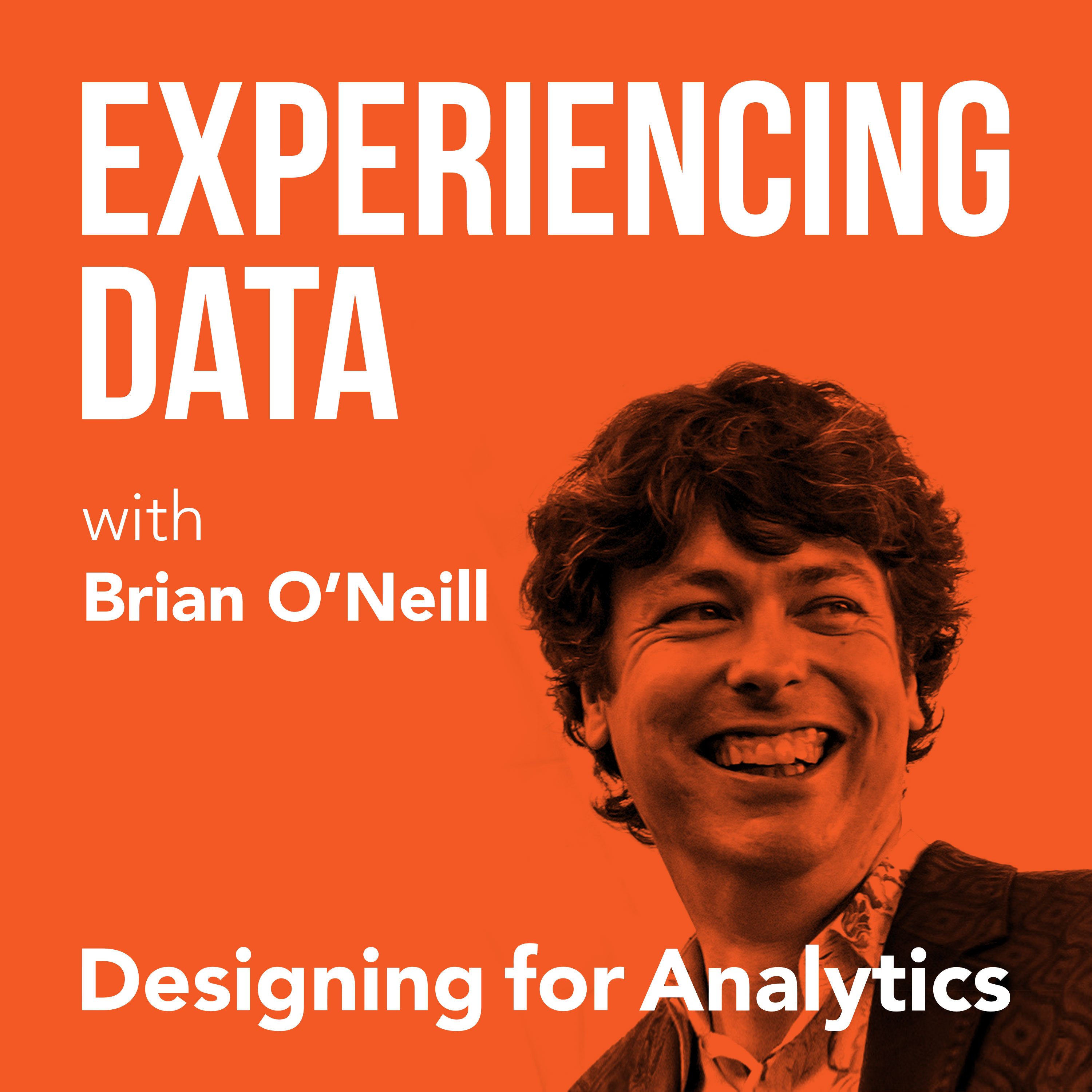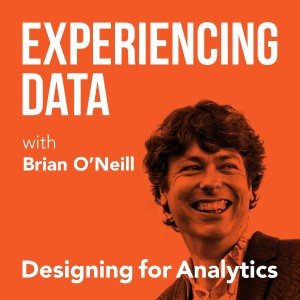

153.7K
Downloads
184
Episodes
Is the value of your enterprise analytics SAAS or AI product not obvious through it’s UI/UX? Got the data and ML models right...but user adoption of your dashboards and UI isn’t what you hoped it would be?
While it is easier than ever to create AI and analytics solutions from a technology perspective, do you find as a founder or product leader that getting users to use and buyers to buy seems harder than it should be?
If you lead an internal enterprise data team, have you heard that a ”data product” approach can help—but you’re concerned it’s all hype?
My name is Brian T. O’Neill, and on Experiencing Data—one of the top 2% of podcasts in the world—I share the stories of leaders who are leveraging product and UX design to make SAAS analytics, AI applications, and internal data products indispensable to their customers. After all, you can’t create business value with data if the humans in the loop can’t or won’t use your solutions.
Every 2 weeks, I release interviews with experts and impressive people I’ve met who are doing interesting work at the intersection of enterprise software product management, UX design, AI and analytics—work that you need to hear about and from whom I hope you can borrow strategies.
I also occasionally record solo episodes on applying UI/UX design strategies to data products—so you and your team can unlock financial value by making your users’ and customers’ lives better.
Hashtag: #ExperiencingData.
JOIN MY INSIGHTS LIST FOR 1-PAGE EPISODE SUMMARIES, TRANSCRIPTS, AND FREE UX STRATEGY TIPS
https://designingforanalytics.com/ed
ABOUT THE HOST, BRIAN T. O’NEILL:
https://designingforanalytics.com/bio/
Episodes

Tuesday Jun 29, 2021
Tuesday Jun 29, 2021
Drew Smith knows how much value data analytics can add to a business when done right.
Having worked at the IKEA Group for 17 years, Drew helped the company become more data-driven, implementing successful strategies for data analytics and governance across multiple areas of the company.
Now, Drew serves as the Executive Vice President of the Analytics Leadership Consortium at the International Institute for Analytics, where he helps Fortune 1000 companies successfully leverage analytics and data science.
On this episode of Experiencing Data, Drew and I talk a lot about the factors contributing to low adoption rates of data products, how product and design-thinking approaches can help, and the value of proper one-on-one research with customers.
In our chat, we covered:
- 'It’s bad and getting worse': Drew's take on the factors behind low adoption of data products. (1:08)
- Decentralizing data analytics: How understanding a user's business problems by including them in the design process can lead to increased adoption of data products. (6:22)
- The importance for business leaders to have a conceptual understanding of the algorithms used in decision-making data products. (14:43)
- Why data analysts need to focus more on providing business value with the models they create. (18:14)
- Looking for restless curiosity in new hires for data teams — and the importance of nurturing new learning through training. (22:19)
- The value of spending one-on-one time with end-users to research their decision-making process before creating a data product. (27:00)
- User-informed data products: The benefits of design and product-thinking approaches when creating data analytics solutions. (33:04)
- How Drew's view of data analytics has changed over 15 years in the field . (45:34)
Quotes from Today’s Episode
“I think as we [decentralize analytics back to functional areas] — as firms keep all of the good parts of centralizing, and pitch out the stuff that doesn’t work — I think we’ll start to see some changes [when it comes to the adoption of data products.]” - Drew (10:07)
“I think data people need to accept that the outcome is not the model — the outcome is a business performance which is measurable, material, and worth the change.” - Drew (21:52)
“We talk about the concept of outcomes over outputs a lot on this podcast, and it’s really about understanding what is the downstream [effect] that emerges from the thing I made. Nobody really wants the thing you made; they just want the result of the thing you made. We have to explore what that is earlier in the process — and asking, “Why?” is very important.” - Brian (22:21)
“I have often said that my favorite people in the room, wherever I am, aren’t the smartest, it’s the most curious.” - Drew (23:55)
“For engineers and people that make things, it’s a lot more fun to make stuff that gets used. Just at the simplest level, the fact that someone cared and it didn’t just get shelved, and especially when you spent half your year on this thing, and your performance review is tied to it, it’s just more enjoyable to work on it when someone’s happy with the outcome.” - Brian (33:04)
“Product thinking starts with the assumption that ‘this is a good product,’ it’s usable and it’s making our business better, but it’s not finished. It’s a continuous loop. It’s feeding back in data through its exhaust. The user is using it — maybe even in ways I didn’t imagine — and those ways are better than I imagined, or worse than I imagined, or different than I imagined, but they inform the product.” - Drew (36:35)
Links Referenced
- Email: dsmith@iiaanalytics.com
- Company site: https://iiaanalytics.com
- LinkedIn: https://www.linkedin.com/in/andrewjsmithknownasdrew/
Analytics Leadership Consortium: https://iianalytics.com/services/analytics-leadership-consortium
No comments yet. Be the first to say something!